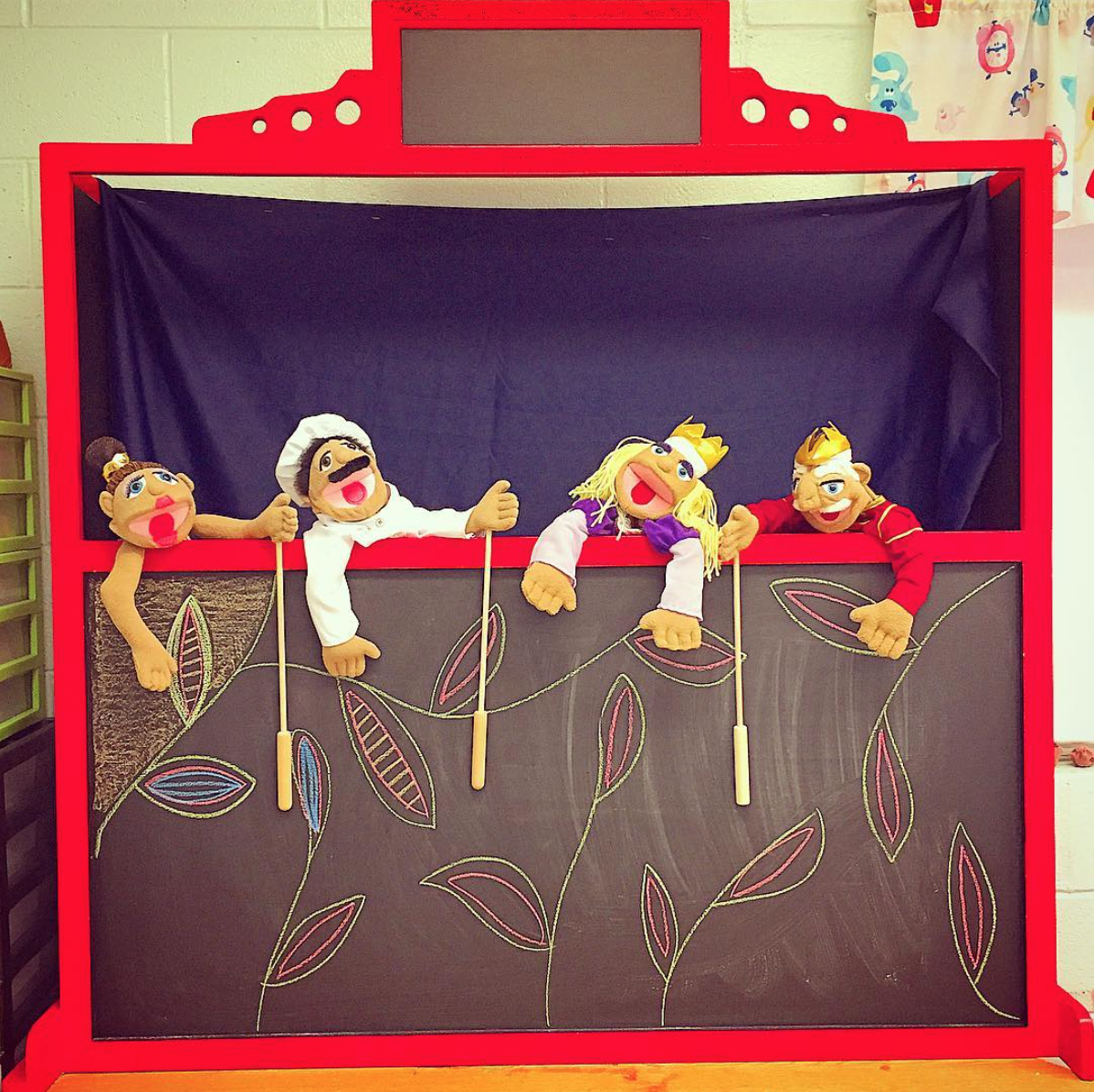We’ve all been to a puppet show at some point in our lives, right? Or at least you’ve watch Sesame Street or The Muppets. Maybe when you were younger you saw them as real people… you never noticed the strings or arm poles connected to them. This was most likely because they were so intriguing and entertaining… I mean, even I still forget sometimes! But that’s the point: puppets are supposed to take you away from reality and into a whole nother world! The creativity, bright colors and funny voices draw you in. And that’s exactly what they’re meant to do.
Ok so we’ve established that we’ve all SEEN a puppet, but have you ever USED one? Not only is it a ton of fun to have a new voice and personality, but it can allow a child or even an adult to express themselves in a new way. Sometimes, by speaking through the puppet, a child that may struggle with emotional expression or social communication can express themselves without feeling like they are on the spot.
You can also use puppets to demonstrate social skills: Brushing hair, brushing teeth, eating, ordering food, shopping, cooking, etc. By allowing the learner to “teach the puppet” or the other way around, it can help make the experience more fun and intriguing for the learner.Video tape these experiences and use them to show other peers how to perform the social or life skill in the future! You could create an entire puppet social skills series if you wanted to!
In our theater program, we use puppets with our students with Autism and other special abilities to role play, practice life skills, improve social skills, and make believe. One of the common symptoms of Autism is lack of appropriate social skills, which includes lack of eye contact, inappropriate conversation, etc. With the use of puppets, those with Autism are able to communicate without using eye contact, which takes away the majority of the social pressure. If the client feels like they are not being forced to look at someone directly and talk, the client may be more willing to open up or speak more openly. As a parent/instructor/therapist, speaking directly to the puppet instead of the child will help them to feel as if they themselves are not speaking, but the puppet is the one communicating. Any way to take the pressure and attention off the child during communication is beneficial to increasing social interaction.
It is important that the puppet has a name, a personality and a unique voice. This will again separate the learner from the puppet. If most of the puppet’s features are different from those of the learner, that will aide even more in the social interactions. This also makes the puppet come to life. It can become a trusted friend that the learner will open up to and maybe even feel comfortable enough to confide in.
Another great benefit of puppet use for children with special abilities is to use and assess body language. Body language and movement is often limited in children with developmental disabilities, so the ability to move and interact physically through the puppets is essential to learning how to read and use body language. The best puppets to use for this type of social interaction study are puppets with the pole or stick attached to it’s arm. This allows the learner to not only use the hand with the puppet on it, but to include the full body in expressive motions.
I’m gonna repeat this because I believe it’s extremely important when working with children with special abilities: Remind the learner that they want the audience to draw their attention to the puppet and not the puppeteer. This will not only ease the nerves of the learner, but it will also help the learner to open up and express more, being reminded that the focus is on the puppet’s actions and speech, and not on the learner’s. Even starting with an exercise where the learner asks their own puppet a few short questions will allow the learner to work on differentiating themselves from the puppet!
So there ya have it! A few ways that puppets can aide in improving social interactions and social skills! Let us know in the comments below if you have any other activities with puppets that might be fun to use!
Thanks for checking out our blog! Click here to receive a free list of 25 Action Songs to get your kids moving! You'll also be the first to find out when we publish a blog, release a mini-book, or create a new experience! And follow us on all social media (Facebook, Twitter, Instagram, Pinterest) @muziquearts!




So, you’re stuck at home, huh? Well, we are too, but that’s not stopping us from bringing music into the homes of our clients and students!